James E Nagel
age ~94
from Fort Wayne, IN
- Also known as:
-
- James Edward Nagel
- Patricia A Nagel
- Jas E Nagel
- Kathy Nagel
James Nagel Phones & Addresses
- Fort Wayne, IN
- 1743 Hillside Ave, Fort Wayne, IN 46805 • (317)7481275
Work
-
Position:Production Occupations
Education
-
Degree:High school graduate or higher
Medicine Doctors

James S. Nagel
view sourceSpecialties:
Internal Medicine
Work:
Quality Of Life Institute
70 Declaration Dr STE 101, Chico, CA 95973
(530)5669700 (phone), (530)5661901 (fax)
70 Declaration Dr STE 101, Chico, CA 95973
(530)5669700 (phone), (530)5661901 (fax)
Education:
Medical School
Loma Linda University School of Medicine
Graduated: 1989
Loma Linda University School of Medicine
Graduated: 1989
Procedures:
Arthrocentesis
Vaccine Administration
Vaccine Administration
Conditions:
Disorders of Lipoid Metabolism
Hypothyroidism
Menopausal and Postmenopausal Disorders
Abdominal Hernia
Abnormal Vaginal Bleeding
Hypothyroidism
Menopausal and Postmenopausal Disorders
Abdominal Hernia
Abnormal Vaginal Bleeding
Languages:
English
Spanish
Spanish
Description:
Dr. Nagel graduated from the Loma Linda University School of Medicine in 1989. He works in Chico, CA and specializes in Internal Medicine. Dr. Nagel is affiliated with Enloe Medical Center.
Lawyers & Attorneys

James A. Nagel - Lawyer
view sourceLicenses:
Virginia - Authorized to practice law 2008

James A Nagel - Lawyer
view sourceLicenses:
Dist. of Columbia - Active 1986

James Nagel - Lawyer
view sourceOffice:
Federal Home Loan Mortgage Corporation "Freddie Mac"
Specialties:
Trusts
Taxation Law
Trusts
Real Estate
Taxation Law
Trusts
Real Estate
ISLN:
904237298
Admitted:
1982
University:
University of Illinois, B.S., 1979
Law School:
George Washington University, J.D., 1982

James Allan Nagel - Lawyer
view sourceResponsibilities:
Real Estate
ISLN:
904237298
Admitted:
1982
University:
University of Illinois, B.S.
Law School:
George Washington University, J.D.
Us Patents
-
Quantum Communication System That Switches Between Quantum Key Distribution (Qkd) Protocols And Associated Methods
view source -
US Patent:20220353067, Nov 3, 2022
-
Filed:Jun 28, 2022
-
Appl. No.:17/851769
-
Inventors:- Melbourne FL, US
JAMES A. NAGEL - FORT WAYNE IN, US
MICHAEL R. LANGE - MELBOURNE FL, US -
International Classification:H04L 9/08
H04B 10/70
H04L 9/12 -
Abstract:A quantum communications system includes a communications system that operates with a quantum key distribution (QKD) system, which includes a transmitter node, a receiver node, and a quantum communications channel coupling the transmitter node and receiver node. The transmitter node may be configured to transmit to the receiver node a bit stream of optical pulses, and switch between first and second QKD protocols based upon at least one channel condition.
-
Communications System Using Pulse Divider And Associated Methods
view source -
US Patent:20220271846, Aug 25, 2022
-
Filed:Feb 19, 2021
-
Appl. No.:17/179600
-
Inventors:- MELBOURNE FL, US
FRASER R. DALGLEISH - VERO BEACH FL, US
CYPRYAN T. KLISH - MELBOURNE FL, US
JAMES A. NAGEL - FORT WAYNE IN, US -
International Classification:H04B 10/69
H04B 10/61
H04B 10/079
H04B 10/2569
H04B 10/508 -
Abstract:A communications system may include a transmitter node, a receiver node, and an optical communications channel coupling the transmitter node and receiver node. The transmitter node may include a pulse transmitter and a pulse divider downstream therefrom. The receiver node may include a pulse recombiner and a pulse receiver downstream therefrom.
-
Quantum Communications System Having Stabilized Quantum Communications Channel And Associated Methods
view source -
US Patent:20220271847, Aug 25, 2022
-
Filed:Feb 19, 2021
-
Appl. No.:17/179490
-
Inventors:- MELBOURNE FL, US
MICHAEL R. LANGE - MELBOURNE FL, US
JAMES A. NAGEL - FORT WAYNE IN, US -
International Classification:H04B 10/70
H04B 10/61
H04B 10/508 -
Abstract:A quantum communications system may include transmitter node, a receiver node, and a quantum communications channel coupling the transmitter node and receiver node. The transmitter node may be configured to co-propagate a first pulse for a quantum state and a second pulse to stabilize the quantum state through the quantum communications channel.
-
Quantum Communications System Using Talbot Effect Image Position And Associated Methods
view source -
US Patent:20210152346, May 20, 2021
-
Filed:Nov 19, 2019
-
Appl. No.:16/687767
-
Inventors:- Melbourne FL, US
James A. Nagel - Fort Wayne IN, US
Brent W. Plansinis - Saint Cloud FL, US
Timothy C. Burt - Webster NY, US
Catheryn D. Logan - Melbourne FL, US
Michael R. Lange - Melbourne FL, US -
International Classification:H04L 9/08
H04B 10/70
H04B 10/50
H04B 10/66
H04B 10/25 -
Abstract:A quantum communications system may include a transmitter node, a receiver node, and a quantum communications channel coupling the transmitter node and receiver node. The transmitter node may cooperate with the quantum communications channel defining at least one Talbot effect image position along the quantum communications channel. The receiver node may use located along the quantum communications channel at the at least one Talbot effect image position.
-
Quantum Communications System Having Quantum Key Distribution And Using A Talbot Effect Image Position And Associated Methods
view source -
US Patent:20210135860, May 6, 2021
-
Filed:Oct 30, 2019
-
Appl. No.:16/668002
-
Inventors:- Melbourne FL, US
James A. NAGEL - Fort Wayne IN, US
Brent W. PLANSINIS - Saint Cloud FL, US
Michael C. GARRETT - Melbourne FL, US
Timothy C. BURT - Webster NY, US
Catheryn D. LOGAN - Melbourne FL, US
Michael R. LANGE - Melbourne FL, US -
International Classification:H04L 9/08
H04B 10/70
H04B 10/516
H04B 10/66
H04B 10/2581 -
Abstract:A quantum communications system may include communications system that operates with a quantum key distribution (QKD) system, which includes a transmitter node, a receiver node, and a quantum communications channel coupling the transmitter node and receiver node. The transmitter node may cooperate with the quantum communications channel defining at least one Talbot effect image position along the quantum communications channel. The receiver node may be located along the quantum communications channel at the at least one Talbot effect image position.
-
Quantum Communication System Having Quantum Key Distribution And Using A Midpoint Of The Talbot Effect Image Position And Associated Methods
view source -
US Patent:20210135861, May 6, 2021
-
Filed:Oct 30, 2019
-
Appl. No.:16/668025
-
Inventors:- MELBOURNE FL, US
JAMES A. NAGEL - FORT WAYNE IN, US
BRENT W. PLANSINIS - SAINT CLOUD FL, US
MICHAEL C. GARRETT - MELBOURNE FL, US
TIMOTHY C. BURT - WEBSTER NY, US
CATHERYN D. LOGAN - MELBOURNE FL, US
MICHAEL R. LANGE - MELBOURNE FL, US -
International Classification:H04L 9/08
H04B 10/70
H04B 10/516
H04B 10/66
H04B 10/2581 -
Abstract:A quantum communications system includes a communications system that operates with a quantum key distribution (QKD) system, which includes a transmitter node, a receiver node, and a quantum communications channel coupling the transmitter node and receiver node. The transmitter node may cooperate with the quantum communications channel defining a Talbot effect image position along the quantum communications channel. The receiver node is located along the quantum communications channel at a midpoint of the Talbot effect image position.
-
Quantum Communication System That Switches Between Quantum Key Distribution (Qkd) Protocols And Associated Methods
view source -
US Patent:20210119786, Apr 22, 2021
-
Filed:Oct 21, 2019
-
Appl. No.:16/658398
-
Inventors:- Melbourne FL, US
JAMES A. NAGEL - Fort Wayne IN, US
MICHAEL R. LANGE - Melbourne FL, US -
International Classification:H04L 9/08
H04L 9/12
H04B 10/70 -
Abstract:A quantum communications system includes a communications system that operates with a quantum key distribution (QKD) system, which includes a transmitter node, a receiver node, and a quantum communications channel coupling the transmitter node and receiver node. The transmitter node may be configured to transmit to the receiver node a bit stream of optical pulses, and switch between first and second QKD protocols based upon at least one channel condition.
-
Quantum Communication System Having Time To Frequency Conversion And Associated Methods
view source -
US Patent:20210099236, Apr 1, 2021
-
Filed:Sep 26, 2019
-
Appl. No.:16/583346
-
Inventors:- Melbourne FL, US
Vivek Krishna - West Melbourne FL, US
James A. Nagel - Fort Wayne IN, US
Brent W. Plansinis - Saint Cloud FL, US
Michael R. Lange - Melbourne FL, US -
International Classification:H04B 10/70
H04L 9/08
G02F 1/35
G03H 1/02 -
Abstract:A quantum communications system may include a transmitter node, a receiver node, and a quantum communications channel coupling the transmitter node and receiver node. The receiver node may be configured to arrange a received bit stream of optical pulses from the transmitter node into time bins, convert the optical pulses in the time bins into corresponding optical pulses in frequency bins, and detect respective optical pulse values from each of the frequency bins.
Isbn (Books And Publications)








Resumes

James Nagel
view source
James Nagel
view source
James Nagel
view source
James Nagel
view source
James Nagel
view source
James Nagel
view sourceYoutube
Plaxo

James Nagel
view source419 Lovett Blvd. Houston, TX 77006
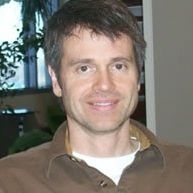
James Nagel
view source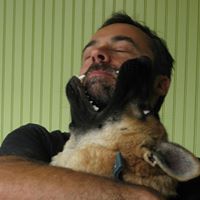
James Nagel
view source
James Nagel
view source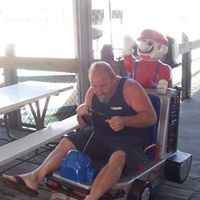
James Nick Nagel
view source
James Nagel
view source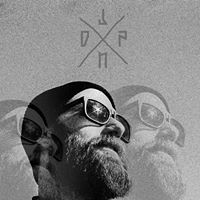
James A. Nagel
view source
Christopher James Nagel
view source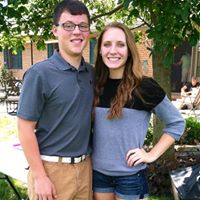
Kenneth James Nagel
view sourceGoogleplus
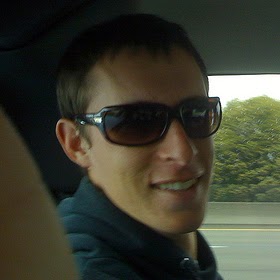
James Nagel

James Nagel
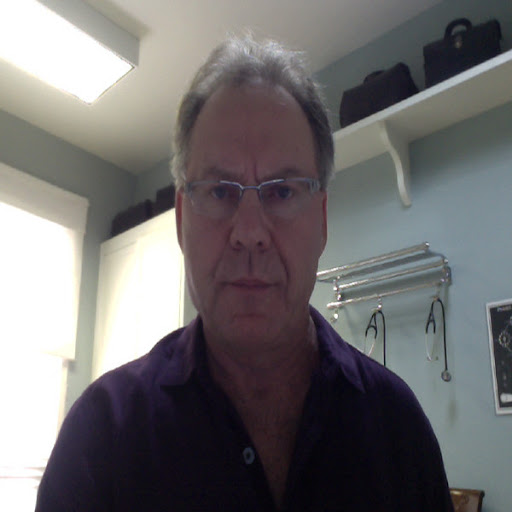
James Nagel

James Nagel

James Nagel

James Nagel

James Nagel

James Nagel
Classmates

James Nagel
view sourceSchools:
Humboldt High School Humboldt MN 1979-1981
Community:
Tamiko Mitchell, Kate Chad, Elaine Lofberg

James Nagel
view sourceSchools:
Pacific Union College Pr Angwin CA 1970-1974
Community:
Elizabeth Sprague, Robert Gepford, Kathy Silsby, Meryl Sprengel

James Nagel
view sourceSchools:
St. Lawrence High School Mt. Calvary WI 1978-1982
Community:
Elizabeth Hernandez, Kevin Hoeschen, Pete Trilling, Rick Lumbreras

James Nagel
view sourceSchools:
Our Lady Queen of Peace School Harper Woods MI 1961-1969
Community:
Roger Dube

James Nagel
view sourceSchools:
Middletown Area High School Middletown PA 2000-2004
Community:
Tina Wilken, Ann Wert, Owen Hannah

James Nagel (Bughman)
view sourceSchools:
Valmeyer High School Valmeyer IL 1959-1963
Community:
Shannon Boyett

James Nagel
view sourceSchools:
Springer High School Springer NM 1953-1957
Myspace

James Nagel
view sourceGet Report for James E Nagel from Fort Wayne, IN, age ~94
![James Nagel - Run This Neighborhood [Official Video] James Nagel - Run This Neighborhood [Official Video]](https://i.ytimg.com/vi/9HTcNt5FN-w/hq720.jpg?sqp=-oaymwEcCNAFEJQDSFXyq4qpAw4IARUAAIhCGAFwAcABBg==&rs=AOn4CLAiowlU61Gy5NUq6kyvu7WDYoyEMw)









